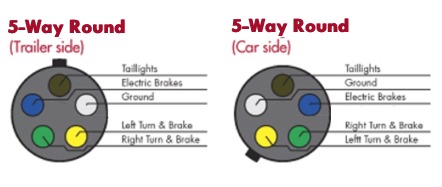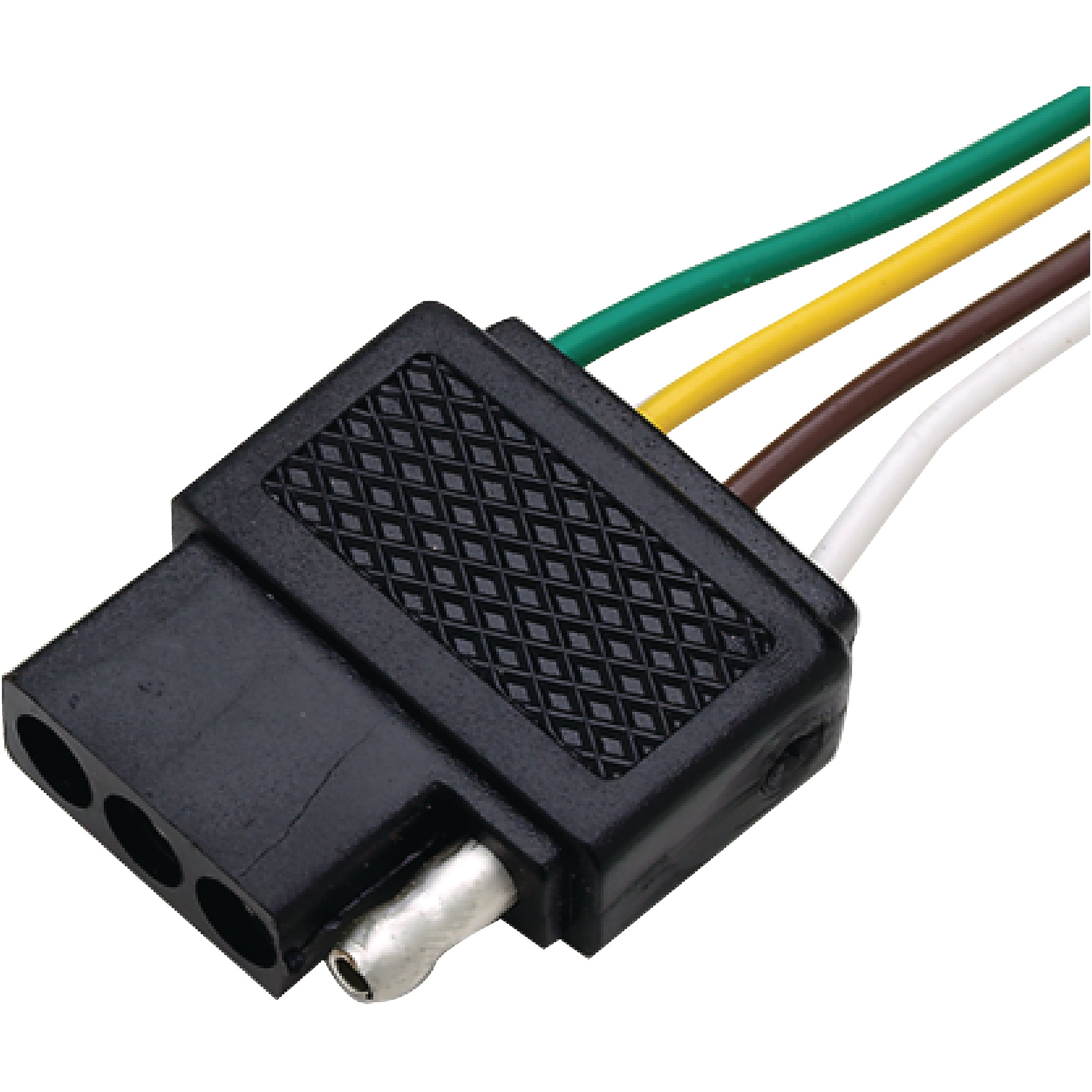
This contact occurs on medium duty trailers that have both reverse lights and electric brakes.įlat 5-pin connector Flat 5-pin connector (Towing vehicle side) Reversing lamps, control current to block surge brakes when reversing.Ħ-pin round connector 6-pin round connector (Towing vehicle side)
#3 WAY FLAT TRAILER CONNECTOR REGISTRATION#
Tail lamps, clearance lamps/outline marker lamps and registration plate lamp This is common for RVs and other large trailers which have additional loads beyond the basic for tail lights and brake/turn signals.

#3 WAY FLAT TRAILER CONNECTOR ISO#
The functional differences are small, but the difference in voltage and current requirements makes the SAE J560 and ISO 1185 incompatible without the use of additional equipment in the form of voltage converters. Some of the pins in the connector have also a slightly different function. The difference is that J560 indicates that the voltage must be 12V and that wire areas shall be larger due to the higher currents needed when using 12V compared to 24V. The plug for SAE J560 is physically identical to the connector ISO 1185. Physical design according to standard ISO 1185 / SAE J560. Heavy duty vehicles - SAE J560 7-pin trailer connector according to ISO 1185/SAE J560 (Towing vehicle side) These converters usually don't handle the case of separate position light circuits for left and right side in the towing vehicle. What most of these converters do is to bring together the turn signals and stop lamp signal from a three-wire solution using 54, L and R into a two-wire solution using L54 and R54 according to DIN where brake light and turn indicator uses the same wire and bulb for each side. In market there are many special converters that solves the problem of connecting a car with European wiring to a trailer with North American wiring. If you have a trailer with a lot of lights the diode and relay wiring is preferred, but if you have a trailer with a simple light arrangement it is usually sufficient to wire to 58L. Note that the diodes have to be able to handle high currents or that they are used to control a relay which in turn feeds the trailer. If you want to be more advanced you can make a simple connection with two diodes that provide balanced load of the circuits. These two circuits shall not be merged because it can create problems in the towing vehicle. In case you have a vehicle that separates the left and right side position lights into 58L and 58R - like many German cars - it is advisable to choose 58L to feed the taillights. In some cases - as in the flat 4-pin or 5-pin connector - it is fairly obvious which color that is connected to which pin. Note that different color coding can be used for certain functions, which means that you can not trust the colors mentioned here without measuring the contact and wiring from case to case.


Heavy Vehicles are standardized through SAE J560 which is similar to ISO 1185. However, you can not be entirely sure until you have measured the current connector on the vehicle and trailer that they fit each other. On cars and light trucks (listed below as Light Vehicles) there is no formal standard, instead there is an accepted standard. In North American, but most commonly the USA market, it is very common for brake lights and turn signals to be combined. ( November 2019)Ī number of standards prevail in North America, or parts of it, for trailer connectors, the electrical connectors between vehicles and the trailers they tow that provide a means of control for the trailers. Please help improve this article either by rewriting the how-to content or by moving it to Wikiversity, Wikibooks or Wikivoyage. The purpose of Wikipedia is to present facts, not to train.

This article contains instructions, advice, or how-to content.


 0 kommentar(er)
0 kommentar(er)
